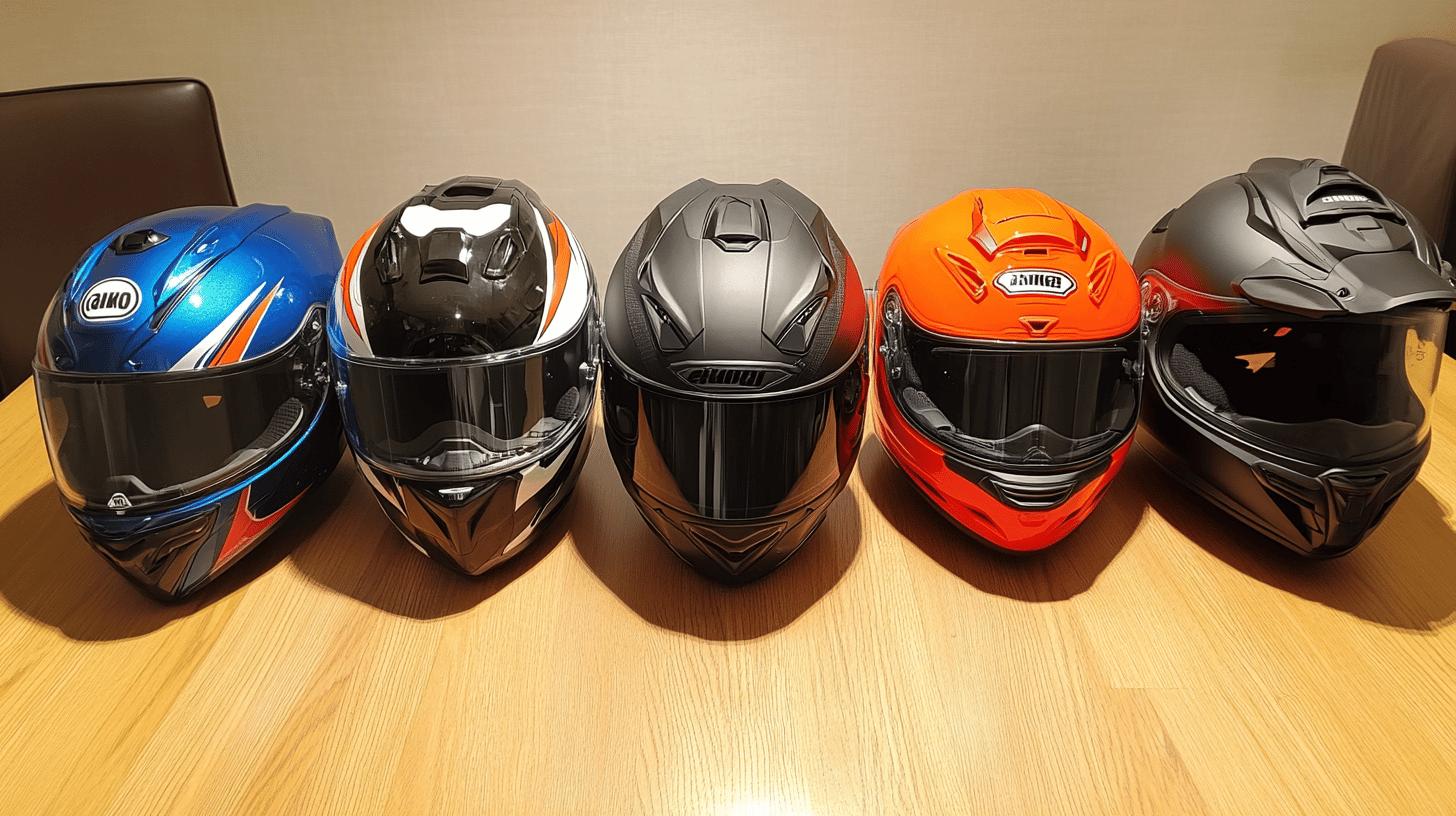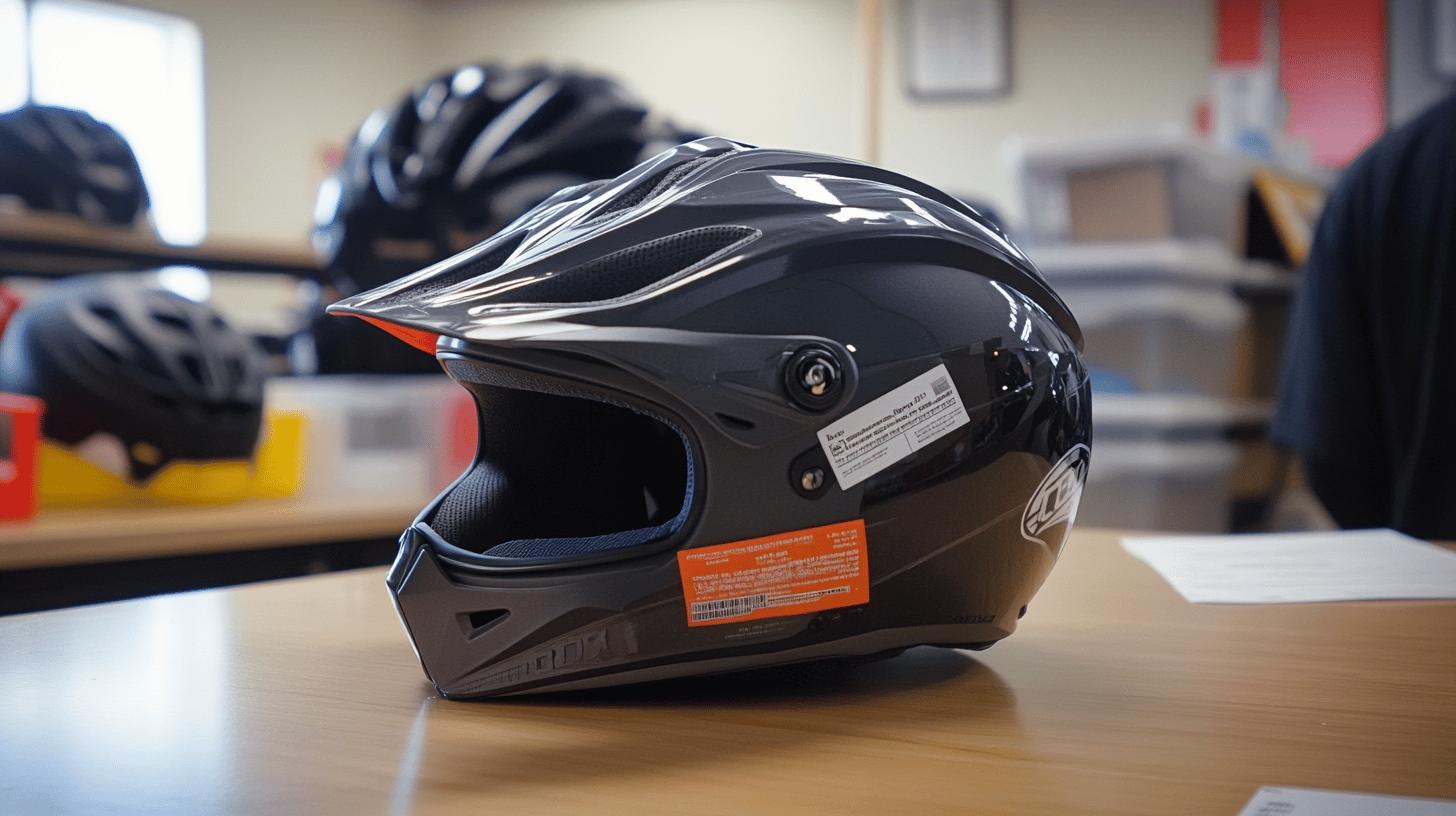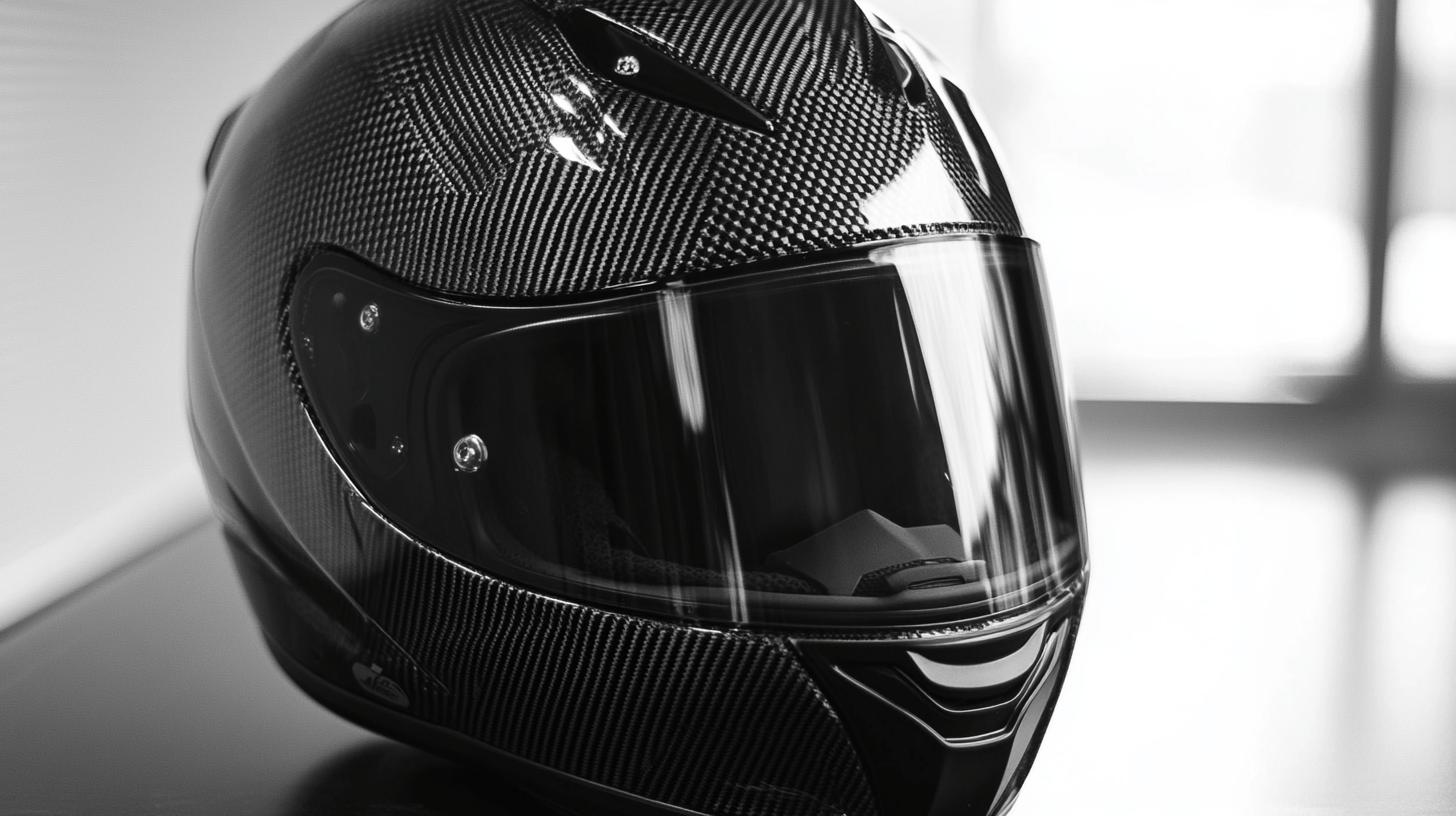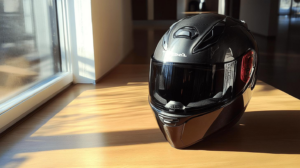Buying a motorcycle helmet online might seem daunting, but you can navigate this process successfully with the right knowledge. Selecting a helmet is not just about picking the right size or the coolest design; it symbolizes your commitment to safety and riding comfort.
This guide dives deep into understanding helmet types like Full Face, Open Face, Modular, and Dual-Sport, emphasizes crucial fitting techniques, and highlights the significance of safety certifications.
Explore practical tips for choosing the best helmet online by navigating trusted retailers, comparing prices, and understanding return policies. By the end, you'll be equipped to make an informed purchase, ensuring your riding experience is both safe and enjoyable.
Understanding Helmet Types and Their Features

Selecting the appropriate motorcycle helmet is crucial for both safety and comfort. The right helmet type can significantly impact a rider's protection level and overall riding experience, depending on the riding conditions and personal preferences. Recognizing the features of different helmet styles helps in making an informed choice.
Full Face helmets are known for offering comprehensive protection, covering the entire head and face. This design minimizes the risk of injury by shielding the chin and jaw, areas often exposed in accidents. They are ideal for long-distance touring or high-speed riding due to their superior safety features. Despite their protective benefits, some riders find them restrictive and less ventilated.
Open Face helmets, often referred to as 3/4 helmets, provide excellent visibility and ventilation, making them popular for city commuting and leisure rides. While they cover the top, back, and sides of the head, they leave the face exposed, compromising facial protection. Riders who prioritize a sense of freedom and airflow might favor this style, despite its limited safety in frontal impacts.
Modular helmets, or Flip-up helmets, combine the features of Full Face and Open Face helmets. They offer the safety of a Full Face helmet with the convenience of an Open Face design, as the chin bar can be lifted. This makes them suitable for touring and commuting, allowing riders to adjust ventilation and protection levels easily. However, they tend to be heavier due to the additional mechanisms.
Dual-Sport helmets are versatile, designed for both on-road and off-road adventures. They feature a blend of Full Face and off-road helmet characteristics, such as an extended visor and increased ventilation. These helmets cater to riders who switch between terrains, offering adaptability without compromising protection. They can be noisier on highways due to their aerodynamic shape.
| Helmet Type | Protection Level | Visibility | Weight |
|---|---|---|---|
| Full Face | High | Moderate | Heavy |
| Open Face | Moderate | High | Light |
| Modular | High | Moderate | Heavy |
| Dual-Sport | High | Moderate | Moderate |
How to Determine the Correct Helmet Size Online

Choosing the right helmet size is vital for ensuring both safety and comfort while riding. A helmet that fits correctly offers optimal protection by absorbing impact forces efficiently, reducing the risk of head injuries. Ill-fitting helmets, particularly those that are too loose, can come off during an accident, compromising safety. Therefore, understanding how to accurately determine helmet size is essential when purchasing online.
To find the correct size, start by measuring your head circumference. Use a flexible tape measure, placing it about an inch above your eyebrows, wrapping it around the widest part of your head. Note this measurement in either inches or centimeters.
Once you have your head size, consult the manufacturer's helmet sizing chart. These charts correlate head circumference with helmet sizes, helping you select the right fit. Keep in mind that different brands may have slightly varying size standards, so always refer to the specific chart for the brand you are considering.
-
On delivery, put on the helmet and ensure it fits snugly without causing discomfort.
-
Fasten the chin strap securely, checking for a gap between the strap and chin.
-
Shake your head gently; the helmet should not move independently of your head.
-
Wear the helmet for at least 15 minutes to detect any pressure points or discomfort.
-
Ensure the helmet covers your forehead adequately and does not tilt backward.
Considering head shape is equally important to avoid discomfort and ensure the helmet stays in place during rides. Helmets are designed to accommodate different head shapes, such as round, intermediate oval, or long oval.
Identifying your head shape and selecting a compatible helmet ensures a more comfortable fit. This attention to detail minimizes pressure points and enhances the overall riding experience.
Evaluating Helmet Safety Standards and Certifications

Helmet safety standards are crucial for ensuring that motorcycle helmets provide adequate protection in the event of an accident. Key certifications include DOT, ECE, and Snell ratings, each with specific testing protocols. The DOT certification is a U.S. standard that ensures helmets meet minimum safety requirements, focusing on impact absorption and retention system effectiveness.
ECE 22.05, prevalent in Europe, involves rigorous testing procedures, such as impact tests at different velocities and penetration resistance assessments. Snell ratings are known for their comprehensive testing, often exceeding DOT and ECE standards, including additional trials for shell integrity and visor strength.
These certifications are vital for safety assurance, as they indicate that helmets have undergone standardized testing to verify their protective capabilities. Choosing a helmet that meets one or more of these standards helps riders ensure that their gear is reliable and of high quality.
Helmets with these certifications provide peace of mind, knowing they offer a proven level of safety during rides. When purchasing a helmet, always check for these certifications to confirm the helmet's compliance with established safety benchmarks.
| Certification | Region | Testing Rigour |
|---|---|---|
| DOT | U.S. | Moderate |
| ECE 22.05 | Europe | Rigorous |
| Snell | Global | Comprehensive |
Tips for Selecting the Best Motorcycle Helmet Online

Safety ratings and features should be the first considerations when selecting a motorcycle helmet online. Helmets must meet recognized safety standards such as DOT, ECE, or Snell to ensure they provide adequate protection during an accident.
These certifications assure that the helmet has undergone rigorous testing for impact absorption and retention system effectiveness. Additionally, features like ventilation systems, anti-fog visors, and Bluetooth communication can enhance comfort and functionality. Prioritizing helmets with these certifications and advanced features can greatly improve both safety and the riding experience.
Reading customer reviews and comparing prices are essential steps in making an informed purchase. Reviews from other riders provide valuable insights into the helmet's quality, durability, and comfort. These firsthand accounts often highlight real-world performance and potential issues that aren't immediately apparent from product descriptions.
Price comparison across different platforms is also crucial, but always prioritize helmets with safety certifications and favorable reviews, even if they come at a higher cost. Investing in quality and safety should outweigh any short-term savings from purchasing cheaper, uncertified helmets.
-
Check for safety certifications: Look for DOT, ECE, or Snell ratings.
-
Read multiple customer reviews: Focus on feedback about safety and comfort.
-
Compare prices across websites: Ensure the helmet is authentic and certified.
-
Evaluate additional features: Consider ventilation, Bluetooth, and visor options.
-
Review return policies: Ensure you can exchange or return if it doesn't fit.
Ultimately, prioritize quality over price when choosing a motorcycle helmet online. While it may be tempting to opt for a lower-priced option, investing in a well-certified and feature-rich helmet ensures better protection and comfort. Quality helmets not only last longer but also provide enhanced safety, making them a more valuable purchase in the long run.
Trusted Online Retailers and Return Policies

When purchasing a motorcycle helmet online, selecting from trusted retailers is vital for ensuring authenticity and quality. Reputable websites like RevZilla, Cycle Gear, and Amazon are known for their wide selection of genuine helmets and reliable customer service. These platforms have established reputations within the motorcycle community for providing products that meet safety standards and delivering a seamless shopping experience.
A secure checkout process is crucial to protect personal information and ensure that transactions are safe. Opting for well-regarded retailers can mitigate the risk of counterfeit products and provide peace of mind during the buying process.
Understanding return and exchange policies is equally crucial when buying helmets online. Most retailers allow returns if helmets are unused and in their original packaging, facilitating exchanges for different sizes or models.
Familiarize yourself with the specific terms of these policies to avoid unexpected issues. Key aspects to consider include the time frame for returns, the condition requirements of the helmet, and any potential restocking fees. Knowing these details in advance helps ensure a smooth return process if adjustments are needed.
-
Check the time frame for returns to ensure you have enough time to decide.
-
Verify condition requirements; helmets should be unused and in original packaging.
-
Look for any restocking fees that might apply to returns or exchanges.
- Confirm if the return policy covers shipping costs for returns or exchanges.
Key Features and Technologies in Modern Helmets

Modern motorcycle helmets come equipped with advanced features that significantly enhance rider safety and comfort. These innovations are designed to not only protect the rider during an accident but also improve the overall riding experience. Advanced protective features, like multi-density EPS liners and reinforced chin bars, provide superior impact absorption and structural integrity.
The integration of lightweight materials such as Carbon Fibre and Composite contributes to a helmet's strength while minimizing its weight, although these materials can sometimes elevate noise levels. Ensuring the helmet incorporates these features can make a noticeable difference in both safety and comfort.
Popular technologies such as Bluetooth communication and anti-fog visors have become increasingly common in modern helmets. Bluetooth systems enable seamless connectivity with smartphones and other devices, allowing riders to communicate or listen to music hands-free.
Anti-fog visors are crucial for maintaining clear visibility in varying weather conditions, preventing condensation that could obscure vision. These technological advancements cater to the demands of today's riders, offering convenience without compromising safety.
-
Ventilation systems: Ensure effective airflow to regulate temperature and reduce fogging.
-
Material strength: Look for helmets made with robust materials like Carbon Fibre or Composite.
-
Bluetooth communication: Facilitates hands-free calls and navigation.
-
Anti-fog visors: Maintain visibility in challenging weather conditions.
-
Removable liners: Allow for easy cleaning and hygiene maintenance.
Incorporating these features and technologies into modern helmets greatly improves the riding experience. Enhanced ventilation systems keep riders comfortable during long rides by providing adequate airflow. The strategic use of materials ensures that helmets are not only strong but also lightweight, reducing neck strain over extended periods.
Communication systems offer the convenience of connectivity, while anti-fog visors ensure clear vision, enhancing safety in various riding environments. These innovations collectively make riding more enjoyable and secure.
Final Words
Selecting a motorcycle helmet involves understanding various types, sizing correctly, and prioritizing safety standards. Knowing helmet categories, such as Full Face to Dual-Sport, aids in pinpointing the right fit for your riding needs.
When learning how to buy a motorcycle helmet online, prioritize safety certifications, customer reviews, and trusted retailers for a secure purchase.
By emphasizing quality and comfort, riders can enhance their safety and enjoyment on the road.
FAQ
How do I determine the correct helmet size online?
Measuring head circumference accurately is crucial for online helmet purchases. Use a flexible tape measure around your head's widest part, usually just above the eyebrows. Consult the manufacturer's sizing chart to choose the perfect fit.
How do I know what motorcycle helmet fits me?
After selecting a helmet size, ensure the fit is snug and free from pressure points. The helmet should not move when you shake your head and should cover the head evenly without discomfort.
How much should I pay for a good motorcycle helmet?
The cost of a good motorcycle helmet typically ranges from $100 to $500, balancing safety features, comfort, brand reputation, and design elements. Prioritize certifications and quality.
What certification do motorcycle helmets need?
Motorcycle helmets should meet standards such as DOT, ECE, or Snell. DOT is common in the U.S., ECE 22.05 in Europe, and Snell offers comprehensive testing, ensuring reliable rider safety.
Where can I buy motorcycle helmets online?
Reputable sites like RevZilla, Cycle Gear, and Amazon provide a wide selection of authentic helmets. Evaluate customer service, return policies, and product reviews when choosing an online retailer.
How to check return policies when buying helmets online?
Review the return policy for specifics on time frame, condition requirements, any restocking fees, and return process simplicity. Confirm the helmet must be unused and in its original packaging for returns.

Brad Mitchell is a seasoned motorcycle enthusiast with over 16 years of riding experience. He’s spent countless hours on the open road, particularly favoring scenic routes aboard his trusted Harley-Davidson. Brad’s laid-back approach to life and riding gives him a unique perspective on motorcycle gear and safety, which he shares through his in-depth reviews and expert advice on ProtectiveGearz.



